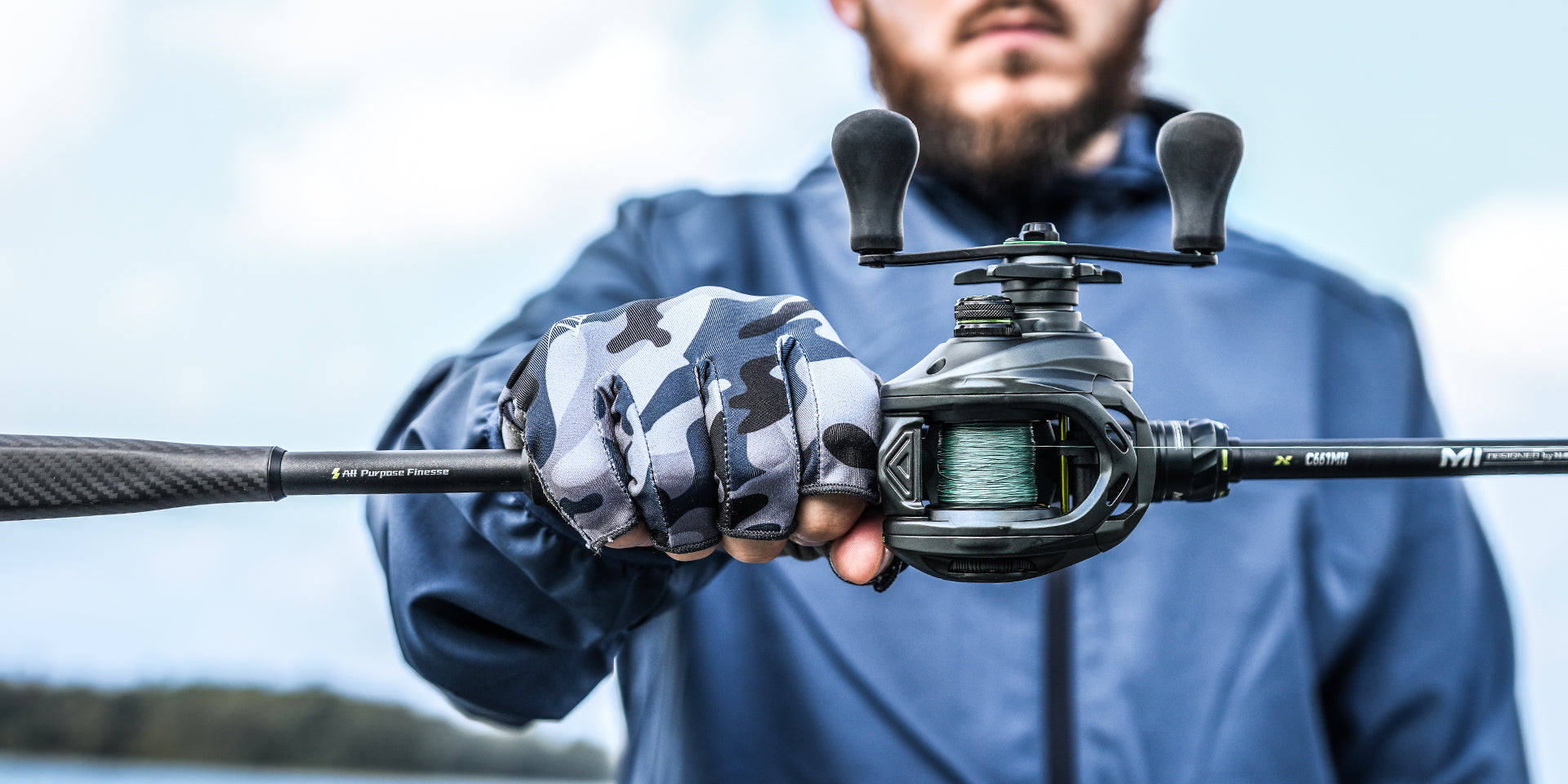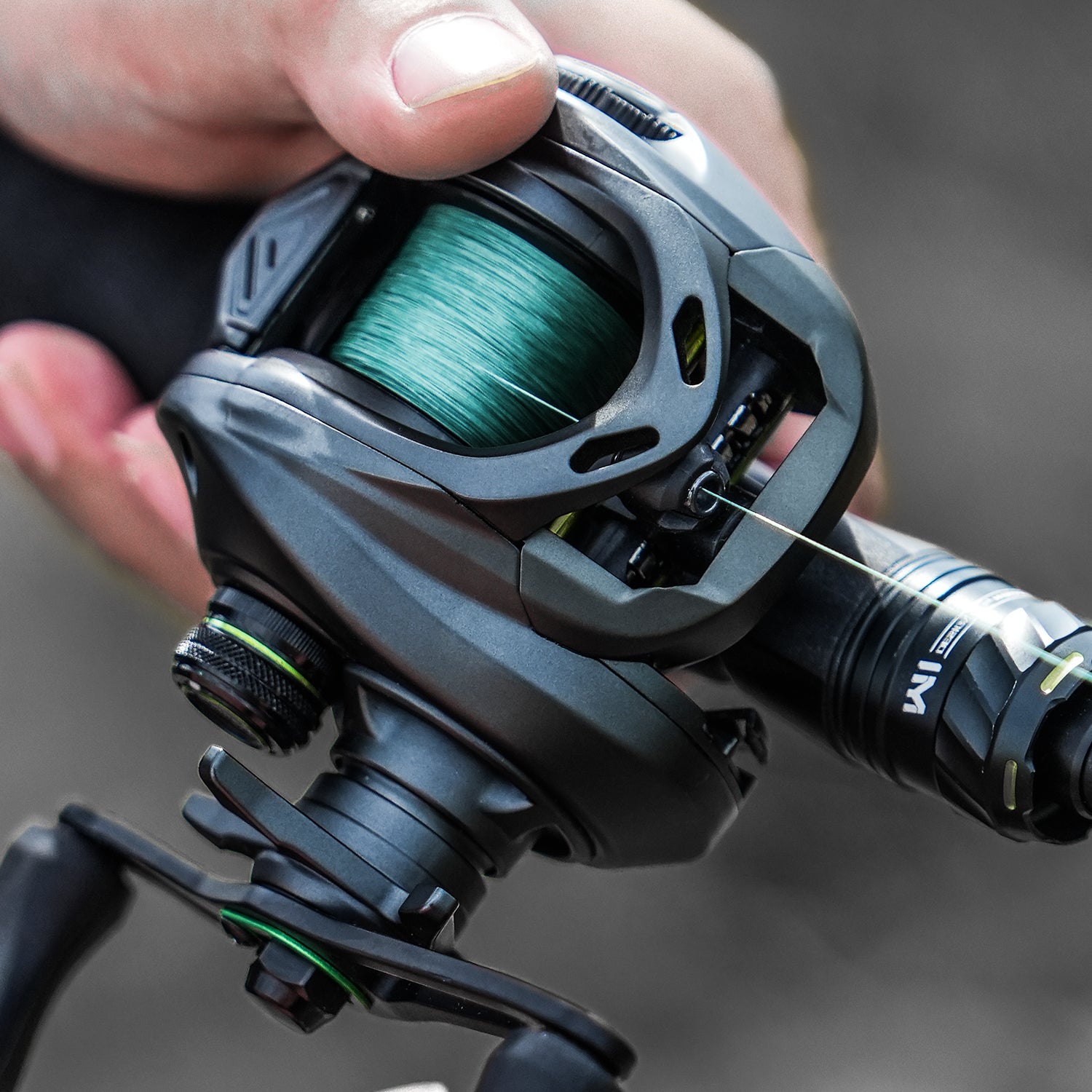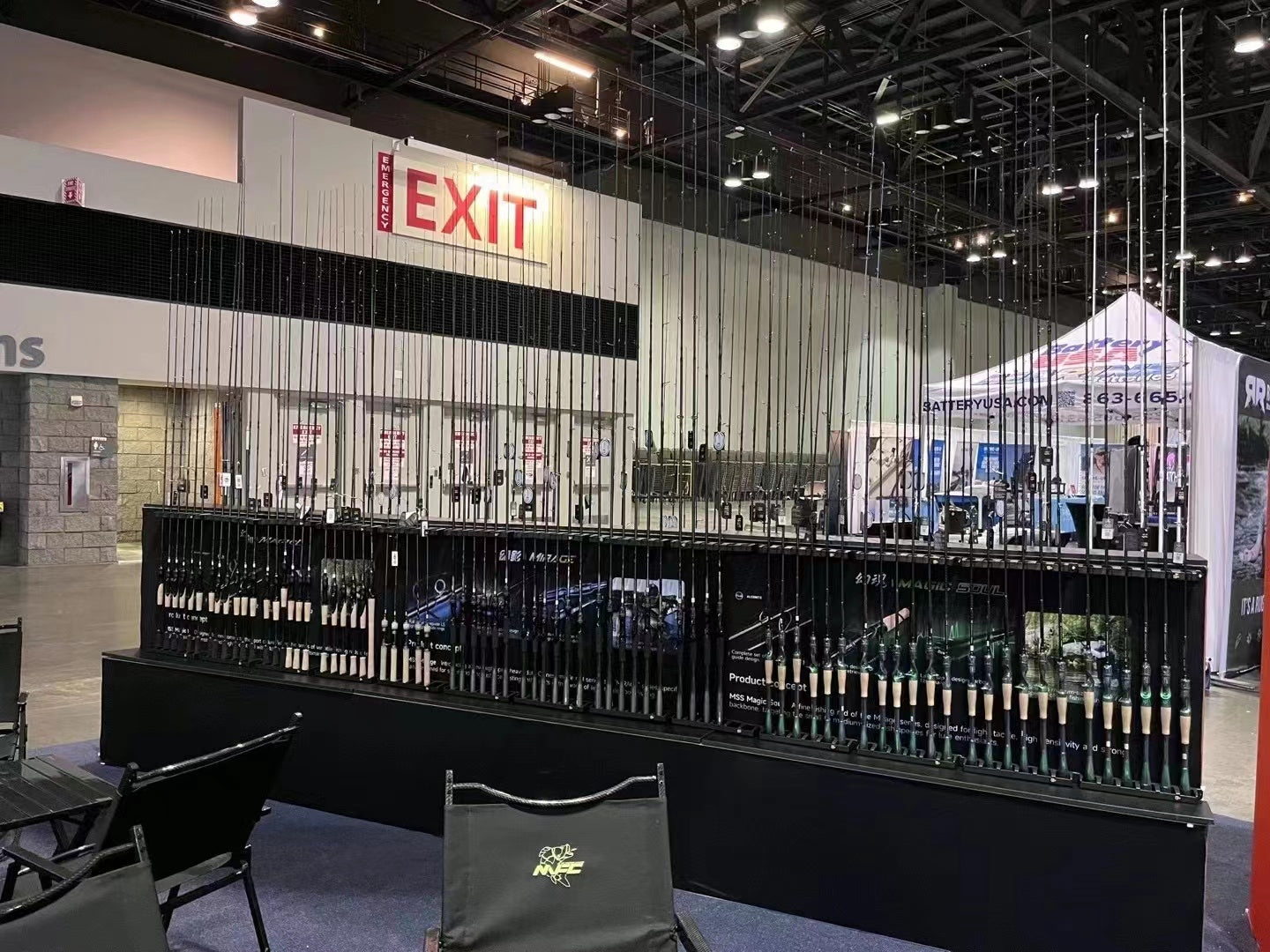That frustrating moment when your rod bends too much—or barely at all—usually means you've got the wrong "weight" for the job. Rod power in fishing is not quantified in ounces but in its backbone. Light rods give you the sensitivity of a trout's gentle bite, mediums are good for bass strikes, and heavies keep you in control when a big catfish gets on. A vast majority of fishing disappointments stem from this incompatibility. To have the right rod power for your fish, lures, and place you're fishing is not challenging if you get the basics and it is the difference between going home with something and going home empty-handed.

What Is Fishing Rod Power?
Fishing rod power is the degree to which a rod resists bending when force is applied. Think of it as the backbone or strength of the rod. A higher power rod has greater backbone and bends less, while a lower power rod bends more. This characteristic is key to matching your rod to your fishing conditions. In contrast, rod action refers to where along the length a rod bends when pressure is applied, with fast action rods bending mainly at the tip and slow action rods bending throughout the blank.
The Complete Power Spectrum
Fishing rods come in a range of power ratings, each designed for specific purposes:
Ultralight (UL)
These are low-resistance bend rods that bend easily under light pressure. They're perfect for casting diminutive lures and ideal for catching small panfish and stream trout. You can feel even the lightest bites with their high sensitivity and use them with finesse techniques in clear water.
Light (L)
Light power rods offer a bit more backbone than ultralights while maintaining good sensitivity. They work well for trout, panfish, and smaller bass. These rods still provide excellent feel but give you more control when fighting fish.
Medium-Light (ML)
Medium-light rods are a compromise between sensitivity and power. They're sensitive enough for the majority of smaller species of fish but strong enough for small gamefish. This strength rating offers a good compromise when you need more power than a light rod without sacrificing too much sensitivity.
Medium (M)
Medium power rods are the do-it-all rods of fishing. They are able to handle a wide range of lures and line test. Their ability to adapt is also what makes them excellent starter rods for anglers who want to try many different techniques, particularly for use in bass fishing.
Medium-Heavy (MH)
These rods provide an excellent backbone with some tip sensitivity. In fishing around and in cover or with larger baits, a medium-heavy rod gives you the power to overmatch fish and keep them from wrapping up around cover. They are best used with larger lures and larger line.
Heavy (H)
Heavy power rods deliver substantial strength for muscling big fish away from structure. When targeting powerful species or fishing in challenging environments with dense cover, heavy rods provide the necessary stopping power. The trade-off is reduced sensitivity for detecting subtle bites.
Extra-Heavy (XH) and Beyond
The strongest standard power rating, extra-heavy rods are built for extreme fishing scenarios. Offshore saltwater anglers, musky hunters, and trophy catfish specialists rely on these rods. Some manufacturers offer additional classifications beyond XH (such as XXH or "Mag Heavy") for specialized big-game applications.

Manufacturer Differences
Power ratings aren't standardized across the industry. A medium-heavy rod from one manufacturer might feel closer to a heavy rod from another brand. When switching between brands, it's helpful to physically test rods rather than relying solely on the labeled rating. Some companies are known for rating their rods "heavier" than others, making hands-on testing valuable when selecting a new rod.
Four Key Factors That Determine Your Ideal Rod Power
Since you now understand the different power ratings to select from, you should also be cognizant of what factors are most crucial when making your decision. Four significant factors will guide you in matching the proper rod power to your specific fishing situation.
Target Fish Species
The species of fish you are trying to catch largely controls your rod power choice. Larger species like pike or musky need bigger rods with more backbone to properly manage them. Fish that buck and headshake or run hard, such as bass or saltwater species, also need stronger rods to maintain tension during the struggle.
Observe mouth structure also. Fish that have delicate mouths (like trout or crappie) are best suited to the use of lighter power rods that will not tear hooks free during the battle. Those species having hard, bony mouths may need more rod power to set hooks properly.
Lure and Bait Weight
Your rod has an ideal lure weight range usually marked near the handle. It's not a suggestion—it's a performance standard. Casting in this range maximizes your distance and accuracy.
Too-light baits won't load the rod up straight on cast, generating subpar distance. Too heavy, and you'll destroy the rod or make unattractive casts. Some techniques are inherently weight-specific—flipping heavy jigging requires medium-heavy to heavy power rods, but light finesse baits work nicely with lower power ratings.
Line Strength
Like lures, rods come in specific line strengths. Having the right line weight assembles a well-matched system—your rod, reel, line, and lure should all be working without any weak links.
Squaring heavy line on a light rod creates a situation of imbalance where the rod can break under pressure instead of the line. Light line on a heavy rod invites line break during hooksets. There are also different types of hooks involved—thick single hooks (like on jigs) need heavy power to set properly, while several treble hooks need less.
Fishing Environment and Technique
Where and how you fish plays a major role in rod selection. Fishing in heavy cover like thick weeds or around docks requires stronger rods to quickly pull fish away from entanglements. Open water fishing allows for lighter rods that enhance sensitivity.
Different fishing techniques have specific power requirements:
- Finesse techniques (drop shot, ned rig) work best with Light to Medium power rods
- Reaction baits (crankbait, spinnerbait) pair well with Medium to Medium-Heavy powers
- Power techniques (heavy jig, frog, large swimbait) need Medium-Heavy to Extra-Heavy backbone
Saltwater fishing typically demands more robust equipment than freshwater applications due to harsher conditions and generally stronger fish.

Recommended Rod Powers for Common Fishing Scenarios
To help you apply what you've learned, here are specific rod power recommendations for popular fishing situations. These suggestions consider the fish species, typical lures, and fishing environments for each scenario.
Quick Reference Guide for Rod Power Selection
| Fishing Scenario | Recommended Rod Power | Best For |
| Panfish & Small Trout | Ultralight (UL) to Light (L) | Small species, tiny lures, delicate presentations |
| Bass - All-around | Medium (M) to Medium-Heavy (MH) | Versatile bass fishing with various techniques |
| Bass - Finesse | Medium-Light (ML) to Medium (M) | Clear water, pressured fish, lightweight presentations |
| Bass - Heavy Cover | Heavy (H) | Thick vegetation, frog fishing, heavy cover extraction |
| Walleye | Medium-Light (ML) to Medium (M) | Jigging, live bait rigging, subtle bite detection |
| Pike & Musky | Medium-Heavy (MH) to Extra-Heavy (XH) | Large predators, heavy lures, powerful runs |
| Catfish | Medium (M) to Heavy (H) | Varies with size and current conditions |
| Saltwater - Inshore | Medium-Light (ML) to Medium-Heavy (MH) | Speckled trout, redfish, structure fishing |
| Saltwater - Offshore | Heavy (H) to Extra-Heavy (XH) | Deep water, powerful species, heavy rigs |
Let's look at some of these scenarios in more detail to understand the reasoning behind these recommendations.
Panfish and Small Trout: UL to L
For panfish in open water or trout in small streams, Ultralight to Light power rods excel. These species are small, have delicate mouths, and typically take tiny lures. The light power provides the sensitivity needed to detect subtle bites while protecting against torn hooks during the fight.
Bass Fishing
Bass fishing requires different powers depending on your technique:
- All-around bass fishing: Medium to Medium-Heavy power handles most standard bass techniques and lure weights while providing good hooksets.
- Finesse techniques: Medium-Light to Medium power works best with lightweight presentations like drop shots and small plastics in clear water or pressured conditions.
- Heavy cover/frog fishing: Heavy power gives you the backbone needed to extract bass from thick vegetation and drive hooks through hollow-body frogs.
Walleye Fishing: ML to M
Medium-Light to Medium power rods offer the sensitivity needed for walleye's subtle bites while providing enough backbone for effective hooksets when jigging or rigging. These powers handle the typical 1/8 to 3/8 oz jigs and live bait presentations walleye anglers commonly use.
Pike and Musky: MH to XH
These toothy predators require Medium-Heavy to Extra-Heavy power depending on lure size. The stronger backbone helps drive hooks through bony mouths and control these powerful fish during their lunging runs. Heavier power also manages the substantial weight of large musky lures.
Catfish: M to H
Choose Medium to Heavy power for catfish based on their size and water conditions. Larger species or fishing in current demands heavier power to handle bigger baits and control fish in flowing water. The stout backbone helps when fighting these powerful bottom-dwellers.
Saltwater Applications
- Inshore fishing: Medium-Light to Medium-Heavy covers most inshore species like speckled trout and redfish. Choose lighter powers for open flats and heavier options when fishing around structure.
- Offshore fishing: Heavy to Extra-Heavy power or specialized offshore ratings manage the substantial weights and powerful species encountered in deep water.
These recommendations provide starting points based on typical scenarios. Your specific fishing conditions, personal preferences, and the local size of fish species might suggest adjusting slightly in either direction.
Rod Power and Rod Action: Two Essential Properties That Work Together
When selecting a fishing rod, power is just one half of the equation. Rod action—a completely separate characteristic—plays an equally important role in how your rod performs on the water.
Rod Power vs. Rod Action
Rod power measures a rod's resistance to bending—its backbone or lifting strength. In contrast, rod action identifies where along its length a rod bends under pressure:
- Fast action rods bend primarily in the top third of the blank
- Moderate action rods bend in the top half
- Slow action rods bend throughout most of the blank length
A helpful analogy: If rod power represents strength, rod action represents flexibility distribution.
Different Techniques Require Specific Power-Action Combinations
The right power-action pairing depends entirely on your fishing technique:
For jigs and single-hook lures: Medium-Heavy power with Fast action provides the sensitivity to detect bites and the backbone to drive hooks home effectively.
For crankbaits and treble-hook lures: Medium-Heavy power with Moderate action offers forgiveness during the fight, preventing hooks from tearing free during head shakes.
For heavy cover fishing: Heavy power with Fast action allows you to quickly extract fish from thick vegetation before they can wrap your line.
The perfect rod matches both characteristics to your specific fishing needs, considering your target species, lure types, and fishing environment.

Use the Right Rod Power for Your Fishing!
There's no single "best" rod power for every kind of fishing—what works depends on what you're fishing for. Rod power rating (Ultralight through Extra-Heavy) helps you match your tackle to your specific needs: the fish you're targeting, the lures you're casting, your line strength, and where you're fishing. Consider power and action when selecting a rod. If you match rod power to your main fishing situation, you will cast better, get more bites, set hooks better, and catch more fish. Using the right rod power converts fishing frustration into fishing success.






